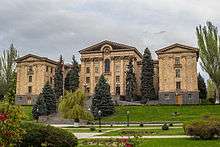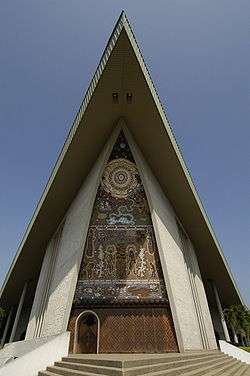Parliamentary system
A parliamentary system or parliamentary democracy is a system of democratic governance of a state (or subordinate entity) where the executive derives its democratic legitimacy from its ability to command the confidence of the legislature, typically a parliament, and is also held accountable to that parliament. In a parliamentary system, the head of state is usually a person distinct from the head of government. This is in contrast to a presidential system, where the head of state often is also the head of government and, most importantly, the executive does not derive its democratic legitimacy from the legislature.
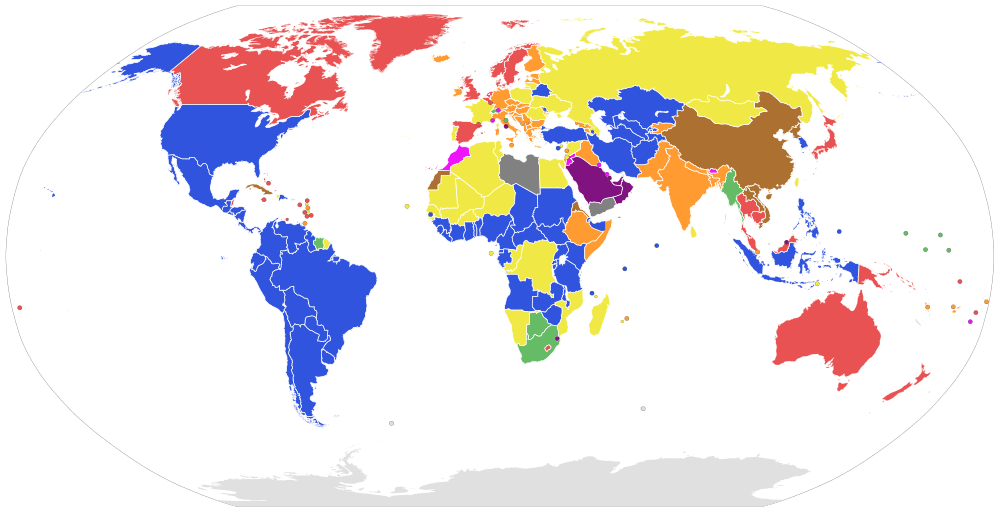
|
| Part of a series on |
| Politics |
|---|
.svg.png) |
|
Primary topics |
|
Academic disciplines |
|
Organs of government |
| Politics Portal |
| Part of the Politics series on |
| Executive government |
|---|
| Head of state |
| Government |
|
| Systems |
| Lists |
| Politics portal |
Countries with parliamentary democracies may be constitutional monarchies, where a monarch is the head of state while the head of government is almost always a member of parliament (such as Thailand, the United Kingdom, Denmark, Sweden, and Japan), or parliamentary republics, where a mostly ceremonial president is the head of state while the head of government is regularly from the legislature (such as Ireland, Germany, India, and Italy). In a few parliamentary republics, such as Botswana, Kiribati and South Africa, among some others, the head of government is also head of state, but is elected by and is answerable to parliament. In bicameral parliaments, the head of government is generally, though not always, a member of the lower house.
Parliamentarianism is the dominant form of government in Europe, with 32 of its 50 sovereign states being parliamentarian. It is also common in the Caribbean, being the form of government of 10 of its 13 island states, and in Oceania. Elsewhere in the world, parliamentary countries are less common, but they are distributed through all continents, most often in former colonies of the British Empire that subscribe to a particular brand of parliamentarianism known as the Westminster system.
History
Since ancient times, when societies were tribal, there were councils or a headman whose decisions were assessed by village elders. Eventually, these councils have slowly evolved into the modern parliamentary system.
The first parliaments date back to Europe in the Middle Ages: specifically in 1188 Alfonso IX, King of Leon (Spain) convened the three states in the Cortes of León.[1][2] An early example of parliamentary government developed in today's Netherlands and Belgium during the Dutch revolt (1581), when the sovereign, legislative and executive powers were taken over by the States General of the Netherlands from the monarch, King Philip II of Spain. The modern concept of parliamentary government emerged in the Kingdom of Great Britain between 1707–1800 and its contemporary, the Parliamentary System in Sweden between 1721–1772.
In England, Simon de Montfort is remembered as one of the fathers of representative government for convening two famous parliaments.[3][4] The first, in 1258, stripped the king of unlimited authority and the second, in 1265, included ordinary citizens from the towns.[5] Later, in the 17th century, the Parliament of England pioneered some of the ideas and systems of liberal democracy culminating in the Glorious Revolution and passage of the Bill of Rights 1689.[6][7]
In the Kingdom of Great Britain, the monarch, in theory, chaired cabinet and chose ministers. In practice, King George I's inability to speak English led the responsibility for chairing cabinet to go to the leading minister, literally the prime or first minister, Robert Walpole. The gradual democratisation of parliament with the broadening of the voting franchise increased parliament's role in controlling government, and in deciding whom the king could ask to form a government. By the 19th century, the Great Reform Act of 1832 led to parliamentary dominance, with its choice invariably deciding who was prime minister and the complexion of the government.[8][9]
Other countries gradually adopted what came to be called the Westminster Model of government, with an executive answerable to parliament, and exercising, in the name of the head of state, powers nominally vested in the head of state. Hence the use of phrases like Her Majesty's government or His Excellency's government. Such a system became particularly prevalent in older British dominions, many of which had their constitutions enacted by the British parliament; such as Australia, New Zealand, Canada, the Irish Free State and the Union of South Africa. Some of these parliaments were reformed from, or were initially developed as distinct from their original British model: the Australian Senate, for instance, has since its inception more closely reflected the US Senate than the British House of Lords; whereas since 1950 there is no upper house in New Zealand.
Democracy and parliamentarianism became increasingly prevalent in Europe in the years after World War I, partially imposed by the democratic victors, the United States, Great Britain and France, on the defeated countries and their successors, notably Germany's Weimar Republic and the new Austrian Republic. Nineteenth-century urbanisation, the Industrial Revolution and modernism had already fuelled the political left's struggle for democracy and parliamentarianism for a long time. In the radicalised times at the end of World War I, democratic reforms were often seen as a means to counter popular revolutionary currents.
Characteristics
A parliamentary system may be either bicameral, with two chambers of parliament (or houses) or unicameral, with just one parliamentary chamber. A bicameral parliament usually consists of a directly elected lower house with the power to determine the executive government, and an upper house which may be appointed or elected through a different mechanism from the lower house.
Scholars of democracy such as Arend Lijphart distinguish two types of parliamentary democracies: the Westminster and Consensus systems.[10]
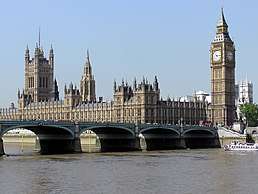
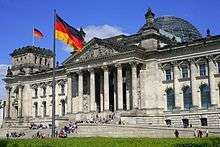
- The Westminster system is usually found in the Commonwealth of Nations and countries which were influenced by the British political tradition.[11][12][13] These parliaments tend to have a more adversarial style of debate and the plenary session of parliament is more important than committees. Some parliaments in this model are elected using a plurality voting system (first past the post), such as the United Kingdom, Canada, and India, while others use some form of proportional representation, such as Ireland and New Zealand. The Australian House of Representatives is elected using instant-runoff voting, while the Senate is elected using proportional representation through single transferable vote. Regardless of which system is used, the voting systems tend to allow the voter to vote for a named candidate rather than a closed list.
- The Western European parliamentary model (e.g. Spain, Germany) tends to have a more consensual debating system and usually has semi-circular debating chambers. Consensus systems have more of a tendency to use proportional representation with open party lists than the Westminster Model legislatures. The committees of these Parliaments tend to be more important than the plenary chamber. Some Western European countries' parliaments (e.g. in the Netherlands, Luxembourg and Sweden) implement the principle of dualism as a form of separation of powers. In countries using this system, Members of Parliament have to resign their place in Parliament upon being appointed (or elected) minister. Ministers in those countries usually actively participate in parliamentary debates, but are not entitled to vote.
Implementations of the parliamentary system can also differ as to how the prime minister and government are appointed and whether the government needs the explicit approval of the parliament, rather than just the absence of its disapproval. Some countries such as India also require the prime minister to be a member of the legislature, though in other countries this only exists as a convention.
- The head of state appoints a prime minister who will likely have majority support in parliament. While in practice most prime ministers under the Westminster system (including Australia, Canada, India, New Zealand and the United Kingdom) are the leaders of the largest party in parliament, technically the appointment of the prime minister is a prerogative exercised by the monarch, the governor-general, or the president. No parliamentary vote takes place on who is forming a government, but since parliament can immediately defeat the government with a motion of no confidence, the head of state is limited by convention to choosing a candidate who can command the confidence of parliament, and thus has little or no influence in the decision.
- The head of state appoints a prime minister who must gain a vote of confidence within a set time. Examples: Italy, Thailand.
- The head of state appoints the leader of the political party holding a plurality of seats in parliament as prime minister. For example, in Greece, if no party has a majority, the leader of the party with a plurality of seats is given an exploratory mandate to receive the confidence of the parliament within three days. If this is not possible, then the leader of the party with the second highest seat number is given the exploratory mandate. If this fails, then the leader of the third largest party is given it and so on.
- The head of state nominates a candidate for prime minister who is then submitted to parliament for approval before appointment. Example: Spain, where the King sends a proposal to the Congress of Deputies for approval. Also, Germany where under the German Basic Law (constitution) the Bundestag votes on a candidate nominated by the federal president. In these cases, parliament can choose another candidate who then would be appointed by the head of state.
- Parliament nominates a candidate whom the head of state is constitutionally obliged to appoint as prime minister. Example: Japan, where the Emperor appoints the Prime Minister on the nomination of the National Diet. Also, Ireland where the President of Ireland appoints the Taoiseach on the nomination of the Dáil Éireann.
- A public officeholder (other than the head of state or their representative) nominates a candidate, who, if approved by parliament, is appointed as prime minister. Example: Under the Swedish Instrument of Government (1974), the power to appoint someone to form a government has been moved from the monarch to the Speaker of Parliament and the parliament itself. The speaker nominates a candidate, who is then elected to prime minister (statsminister) by the parliament if an absolute majority of the members of parliament does not vote no (i.e. they can be elected even if more members of parliament vote No than Yes).
- Direct election by popular vote. Example: Israel, 1996–2001, where the prime minister was elected in a general election, with no regard to political affiliation, and whose procedure can also be described as of a semi-parliamentary system.[14][15]
Furthermore, there are variations as to what conditions exist (if any) for the government to have the right to dissolve the parliament:
- In some countries, such as Denmark, Malaysia, Australia and New Zealand, the prime minister has the de facto power to call an election, at will. This was also the case in the United Kingdom until the passage of the Fixed-term Parliaments Act 2011.
- In Israel, parliament may vote in order to call an election or pass a vote of no confidence against the government.
- Other countries only permit an election to be called in the event of a vote of no confidence against the government, a supermajority vote in favour of an early election or prolonged deadlock in parliament. These requirements can still be circumvented. For example, in Germany in 2005, Gerhard Schröder deliberately allowed his government to lose a confidence motion, in order to call an early election.
- In Sweden, the government may call a snap election at will, but the newly elected Riksdag is only elected to fill out the previous Riksdag's term. The last time this option was used was in 1958.
- Norway is unique among parliamentary systems in that the Storting always serves the whole of its four-year term.
- Since 2011 in the United Kingdom, the House of Commons may be dissolved early only by a vote of two-thirds of its members, or if a vote of non-confidence passes and no alternative government is formed in the next fourteen days.[16]
The parliamentary system can be contrasted with a presidential system which operates under a stricter separation of powers, whereby the executive does not form part of—nor is appointed by—the parliamentary or legislative body. In such a system, parliaments or congresses do not select or dismiss heads of governments, and governments cannot request an early dissolution as may be the case for parliaments. There also exists the semi-presidential system that draws on both presidential systems and parliamentary systems by combining a powerful president with an executive responsible to parliament: for example, the French Fifth Republic.
Parliamentarianism may also apply to regional and local governments. An example is the city of Oslo, which has an executive council (Byråd) as a part of the parliamentary system.
Anti-defection law
A few parliamentary democratic nations such as India, Pakistan, Bangladesh etc. have enacted a law which prohibits floor crossing or switching the party after election process. With this law, the elected representative have to lose their seat in the Parliament House, if they defy the direction of the party in any voting.[17][18][19]
In the UK Parliament, a member is free to cross over to the other side, without being daunted by any disqualification law. In the US, Canada, and Australia, there is no restraint on legislators switching sides.[20]
Advantages
Supporters generally claim three basic advantages for parliamentary systems:
- Adaptability
- Scrutiny and accountability
- Distribution of power
Adaptability
Parliamentary systems like that found in the United Kingdom are widely considered to be more flexible, allowing rapid change in legislation and policy as long as there is a stable majority or coalition in parliament, allowing the government to have 'few legal limits on what it can do'[21] Due to the first-past-the-post 'this system produces the classic "Westminster Model" with the twin virtues of strong but responsive party government'.[22] This electoral system providing a strong majority in the House of Commons, paired with the fused power system results in a particularly powerful Government able to provide change and 'innovate'.[23]
Scrutiny and accountability
The United Kingdom's fused power system is often noted to be advantageous with regards to accountability. The centralised government allows for more transparency as to where decisions originate from, this directly contrasts with the United States' system with former Treasury Secretary C. Douglas Dillon saying "the president blames Congress, the Congress blames the president, and the public remains confused and disgusted with government in Washington".[24] Furthermore, ministers of the U.K. cabinet are subject to weekly Question Periods in which their actions/policies are scrutinised, no such regular check on the government exists in the U.S. system.
Distribution of power
Parliamentary government has attractive features for nations that are ethnically, racially, or ideologically divided. In a presidential system, all executive power is vested in one person, the president, whereas power is more divided in a parliamentary system with its collegial executive. In the 1989 Lebanese Taif Agreement, in order to give Muslims greater political power, Lebanon moved from a semi-presidential system with a powerful president to a system more structurally similar to classical parliamentary government. Iraq similarly disdained a presidential system out of fears that such a system would be tantamount to Shiite domination of the large Sunni minority. Afghanistan's minorities refused to go along with a presidency as strong as the Pashtuns desired.
It can be argued that power is more evenly spread out in parliamentary government, as the government and prime minister do not have the power to make unilateral decisions, as the entire government cabinet is answerable and accountable to parliament. Parliamentary systems are less likely to allow celebrity-based politics to fully dominate a society, unlike what often happens in presidential systems, where name-recall and popularity can catapult a celebrity, actor, or popular politician to the presidency despite such candidate's lack of competence and experience.
Some scholars like Juan Linz, Fred Riggs, Bruce Ackerman, and Robert Dahl have found that parliamentary government is less prone to authoritarian collapse. These scholars point out that since World War II, two-thirds of Third World countries establishing parliamentary governments successfully made the transition to democracy. By contrast, no Third World presidential system successfully made the transition to democracy without experiencing coups and other constitutional breakdowns. A 2001 World Bank study found that parliamentary systems are associated with less corruption, which is supported by a separate study that arrived at the same conclusions.
Calling of elections
In his 1867 book The English Constitution, Walter Bagehot praised parliamentary governments for producing serious debates, for allowing for a change in power without an election, and for allowing elections at any time. Bagehot considered the four-year election rule of the United States to be unnatural, as it can potentially allow a president who has disappointed the public with a dismal performance in the second year of his term to continue on until the end of his four-year term. Under a parliamentary system, a prime minister that has lost support in the middle of his term can be easily replaced by his own peers.
Although Bagehot praised parliamentary governments for allowing an election to take place at any time, the lack of a definite election calendar can be abused. Previously under some systems, such as the British, a ruling party could schedule elections when it felt that it was likely to retain power, and so avoid elections at times of unpopularity. (Election timing in the UK, however, is now partly fixed under the Fixed-term Parliaments Act 2011.) Thus, by a shrewd timing of elections, in a parliamentary system, a party can extend its rule for longer than is feasible in a functioning presidential system. This problem can be alleviated somewhat by setting fixed dates for parliamentary elections, as is the case in several of Australia's state parliaments. In other systems, such as the Dutch and the Belgian, the ruling party or coalition has some flexibility in determining the election date. Conversely, flexibility in the timing of parliamentary elections can avoid periods of legislative gridlock that can occur in a fixed period presidential system. In any case, voters ultimately have the power to choose whether to vote for the ruling party or someone else.
Disadvantages and criticisms
Critics of parliamentarianism, namely proponents of anti-parliamentarianism or anti-parliamentarism, generally claim these basic disadvantages for parliamentary systems:
- Legislative flip-flopping
- Party fragmentation
Legislative flip-flopping
The ability for strong parliamentary governments to 'push' legislation through with the ease of fused power systems such as in the United Kingdom, whilst positive in allowing rapid adaptation when necessary e.g. the nationalisation of services during the world wars, does have its drawbacks. The flip-flopping of legislation back and forth as the majority in parliament changed between the Conservatives and Labour over the period 1940–1980, contesting over the nationalisation and privatisation of the British Steel Industry resulted in major instability for the British steel sector.[25]
Party fragmentation
In R. Kent Weaver's book Are Parliamentary Systems Better?, he writes that an advantage of presidential systems is their ability to allow and accommodate more diverse viewpoints. He states that because "legislators are not compelled to vote against their constituents on matters of local concern, parties can serve as organizational and roll-call cuing vehicles without forcing out dissidents."[26]
Countries
Africa
| Country | Connection between the legislature and the executive |
|---|---|
| Parliament of Botswana elects the President who appoints the Cabinet | |
| Federal Parliamentary Assembly appoints the Council of Ministers | |
| National Assembly appoints the Cabinet of Mauritius | |
| Federal Parliament of Somalia elects the President who appoints the Prime Minister | |
| Parliament of South Africa elects the President who appoints the Cabinet | |
Americas

| Country | Connection between the legislature and the executive |
|---|---|
| Leader of the political party that has the support of a majority in the House of Representatives of Antigua and Barbuda is appointed Prime Minister of Antigua and Barbuda by the Governor-General of Antigua and Barbuda, who then appoints the Cabinet of Antigua and Barbuda on the advice of the Prime Minister | |
| Leader of the political party that has the support of a majority in the House of Assembly of the Bahamas is appointed Prime Minister of the Bahamas by the Governor-General of the Bahamas, who then appoints the Cabinet of the Bahamas on the advice of the Prime Minister | |
| Leader of the political party that has the support of a majority in the House of Assembly of Barbados is appointed Prime Minister of Barbados by the Governor-General of Barbados, who then appoints the Cabinet of Barbados on the advice of the Prime Minister | |
| Leader of the political party that has the support of a majority in the House of Representatives of Belize is appointed Prime Minister of Belize by the Governor-General of Belize, who then appoints the Cabinet of Belize on the advice of the Prime Minister | |
| Leader of the political party that has the support of a majority in the House of Commons of Canada is appointed Prime Minister of Canada by the Governor General of Canada, who then appoints the Cabinet of Canada on the advice of the Prime Minister | |
| Parliament approves the Cabinet of Dominica | |
| Leader of the political party that has the support of a majority in the House of Representatives of Grenada is appointed Prime Minister of Grenada by the Governor-General of Grenada, who then appoints the Cabinet of Grenada on the advice of the Prime Minister | |
| Leader of the political party that has the support of a majority in the House of Representatives of Jamaica is appointed Prime Minister of Jamaica by the Governor-General of Jamaica, who then appoints the Cabinet of Jamaica on the advice of the Prime Minister | |
| Leader of the political party that has the support of a majority in the National Assembly of Saint Kitts and Nevis is appointed Prime Minister of Saint Kitts and Nevis by the Governor-General of Saint Kitts and Nevis, who then appoints the Cabinet of Saint Kitts and Nevis on the advice of the Prime Minister | |
| Leader of the political party that has the support of a majority in the House of Assembly of Saint Lucia is appointed Prime Minister of Saint Lucia by the Governor-General of Saint Lucia, who then appoints the Cabinet of Saint Lucia on the advice of the Prime Minister | |
| Leader of the political party that has the support of a majority in the House of Assembly of Saint Vincent and the Grenadines is appointed Prime Minister of Saint Vincent and the Grenadines by the Governor-General of Saint Vincent and the Grenadines, who then appoints the Cabinet of Saint Vincent and the Grenadines on the advice of the Prime Minister | |
| National Assembly elects the President, who appoints the Cabinet of Suriname | |
| Parliament of Trinidad and Tobago approves the Prime Minister of Trinidad and Tobago | |
Asia
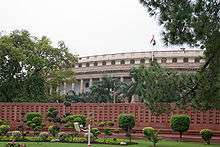
.jpg)
| Country | Connection between the legislature and the executive |
|---|---|
| Jatiya Sangsad approves the Cabinet of Bangladesh | |
| Parliament of Bhutan approves the Lhengye Zhungtshog | |
| Parliament of Cambodia approves the Council of Ministers | |
| President of India appoints the leader of the political party or alliance that has the support of a majority in the Lok Sabha as Prime Minister of India, who then forms the Union Council of Ministers | |
| Council of Representatives approves the Cabinet of Iraq | |
| Leader of the political party with the most Knesset seats in the governing coalition is appointed Prime Minister of Israel by the President of Israel. The Prime Minister then appoints the Cabinet of Israel. | |
| National Diet nominates the Prime Minister who appoints the Cabinet of Japan | |
| National Assembly approves the Crown Prince who appoints the Prime Minister who appoints the Cabinet of Kuwait | |
| Supreme Council approves the Cabinet of Kyrgyzstan | |
| Maronite Christian president is elected by the Parliament of Lebanon. He appoints the Prime Minister (a Sunni Muslim) and the cabinet. The Parliament thereafter approves the Cabinet of Lebanon through a vote of confidence (a simple majority). | |
| Parliament of Malaysia appoints the Cabinet of Malaysia | |
| Assembly of the Union, by an electoral college, elects the President who forms the Cabinet of Myanmar | |
| Parliament of Nepal elects the Prime Minister who, by turn, appoints the Cabinet of Nepal | |
| Parliament of Pakistan appoints the Cabinet of Pakistan | |
| Parliament of Singapore approves the Cabinet of Singapore | |
| The Monarch appoints the MP or individual nominated by in the House of Representatives (usually the leader of the largest party or coalition) as Prime Minister, who forms the Cabinet of Thailand. | |
Europe

_14.jpg)
| Country | Connection between the legislature and the executive |
|---|---|
| Parliament of Albania approves the Cabinet of Albania | |
| National Assembly appoints and (no sooner than one year) can dismiss through the constructive vote of no confidence the Government of Armenia | |
| In theory, chancellor and ministers are appointed by the President. As a practical matter, they are unable to govern without the support (or at least toleration) of a majority in the National Council. The cabinet is politically answerable to the National Council and can be dismissed by the National Council through a motion of no confidence. | |
| Federal Parliament approves the Cabinet of Belgium | |
| National Assembly appoints the Council of Ministers of Bulgaria | |
| Croatian Parliament approves President of Government and the Cabinet nominated by him/her. | |
| President of the Czech Republic appoints the leader of the largest party or coalition in the Chamber of Deputies of the Parliament as Prime Minister, who forms the Cabinet. The Prime Minister must gain a vote of confidence by the Chamber of Deputies. | |
| The Monarch appoints, based on recommendations from the leaders of the parties in Folketinget, the cabinet leader who is most likely to successfully assemble a Cabinet which will not be disapproved by a majority in Folketinget. | |
| Riigikogu elects the Prime Minister candidate nominated by the President of the Republic (normally this candidate is the leader of the parliamentary coalition of parties). The Government of the Republic of Estonia is later appointed by the President of the Republic under proposal of the approved Prime Minister candidate. The Riigikogu may remove the Prime Minister and any other member of the government through a motion of no confidence. | |
| Parliament of Finland appoints the Cabinet of Finland | |
| Bundestag elects the Federal Chancellor (after nomination from the President of Germany), who forms the Cabinet | |
| Hellenic Parliament approves the Cabinet of Greece | |
| National Assembly approves the Cabinet of Hungary | |
| The President of Iceland appoints and discharges the Cabinet of Iceland. Ministers can not even resign without being discharged by presidential decree. | |
| Dáil Éireann nominates the Taoiseach, who is then appointed by the President of Ireland | |
| Italian Parliament grants and revokes its confidence in the Cabinet of Italy, appointed by the President of Italy | |
| Assembly of Kosovo appoints the Government of Kosovo | |
| Saeima appoints the Cabinet of Ministers of the Republic of Latvia | |
| Chamber of Deputies appoints the Cabinet of Luxembourg | |
| House of Representatives appoints the Cabinet of Malta | |
| Parliament of Moldova appoints the Cabinet of Moldova | |
| Parliament of Montenegro appoints the Government of Montenegro | |
| Second Chamber of the States-General can dismiss the Cabinet of the Netherlands through a motion of no confidence | |
| Assembly approves the Government of North Macedonia | |
| The Monarch appoints the MP leading the largest party or coalition in Stortinget as Prime Minister, who forms the Cabinet | |
| National Assembly appoints the Government of Serbia | |
| National Council approves the Government of Slovakia | |
| National Assembly appoints the Government of Slovenia | |
| The Congress of Deputies elects the President of the Government, who forms the Cabinet | |
| The Riksdag elects the Prime Minister, who in turn appoints the other members of the Government | |
| A United Federal Assembly elects the members of the Swiss Federal Council | |
| The Leader, almost invariably a Member of Parliament (MP) and of the political party which commands or is likely to command the confidence of a majority of the House of Commons, is appointed Prime Minister by the British sovereign, who then appoints members of the Cabinet on the nomination and advice of the Prime Minister. | |
Oceania
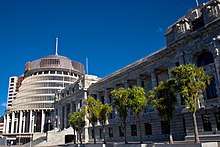
| Country | Connection between the legislature and the executive |
|---|---|
| Leader of the political party that has the support of a majority in the Australian House of Representatives is appointed Prime Minister of Australia by the Governor-General of Australia, who then appoints the Cabinet of Australia on the advice of the Prime Minister | |
| Leader of the political party that has the support of a majority in the New Zealand House of Representatives is appointed Prime Minister of New Zealand by the Governor-General of New Zealand, who then appoints the Cabinet of New Zealand on the advice of the Prime Minister | |
| Leader of the political party that has the support of a majority in the National Parliament is appointed Prime Minister of Papua New Guinea by the Governor-General of Papua New Guinea, who then appoints the Cabinet of Papua New Guinea on the advice of the Prime Minister | |
| Legislative Assembly appoints the Cabinet of Samoa | |
| Parliament of Vanuatu appoints the Cabinet of Vanuatu | |
See also
References
- "The Decreta of León of 1188 - The oldest documentary manifestation of the European parliamentary system". UNESCO Memory of the World. 2013. Retrieved 21 May 2016.
- John Keane: The Life and Death of Democracy, London 2009, 169-176.
- Jobson, Adrian (2012). The First English Revolution: Simon de Montfort, Henry III and the Barons' War. Bloomsbury. pp. 173–4. ISBN 978-1-84725-226-5.
- "Simon de Montfort: The turning point for democracy that gets overlooked". BBC. 19 January 2015. Retrieved 19 January 2015; "The January Parliament and how it defined Britain". The Telegraph. 20 January 2015. Retrieved 28 January 2015.
- Norgate, Kate (1894). . In Lee, Sidney (ed.). Dictionary of National Biography. 38. London: Smith, Elder & Co.
- Kopstein, Jeffrey; Lichbach, Mark; Hanson, Stephen E., eds. (2014). Comparative Politics: Interests, Identities, and Institutions in a Changing Global Order (4, revised ed.). Cambridge University Press. pp. 37–9. ISBN 978-1139991384.
Britain pioneered the system of liberal democracy that has now spread in one form or another to most of the world's countries
- "Constitutionalism: America & Beyond". Bureau of International Information Programs (IIP), U.S. Department of State. Archived from the original on 24 October 2014. Retrieved 30 October 2014.
The earliest, and perhaps greatest, victory for liberalism was achieved in England. The rising commercial class that had supported the Tudor monarchy in the 16th century led the revolutionary battle in the 17th, and succeeded in establishing the supremacy of Parliament and, eventually, of the House of Commons. What emerged as the distinctive feature of modern constitutionalism was not the insistence on the idea that the king is subject to law (although this concept is an essential attribute of all constitutionalism). This notion was already well established in the Middle Ages. What was distinctive was the establishment of effective means of political control whereby the rule of law might be enforced. Modern constitutionalism was born with the political requirement that representative government depended upon the consent of citizen subjects.... However, as can be seen through provisions in the 1689 Bill of Rights, the English Revolution was fought not just to protect the rights of property (in the narrow sense) but to establish those liberties which liberals believed essential to human dignity and moral worth. The "rights of man" enumerated in the English Bill of Rights gradually were proclaimed beyond the boundaries of England, notably in the American Declaration of Independence of 1776 and in the French Declaration of the Rights of Man in 1789.
- Dr Andrew Blick and Professor George Jones — No 10 guest historian series, Prime Ministers and No. 10 (1 January 2012). "The Institution of Prime Minister". Government of the United Kingdom: History of Government Blog. Retrieved 15 April 2016.
- Carter, Byrum E. (2015) [1955]. "The Historical Development of the Office of Prime Minister". Office of the Prime Minister. Princeton University Press. ISBN 9781400878260.
- Lijphart, Arend (1999). Patterns of democracy. New Haven: Yale University Press.
- Julian Go (2007). "A Globalizing Constitutionalism?, Views from the Postcolony, 1945-2000". In Arjomand, Saïd Amir (ed.). Constitutionalism and political reconstruction. Brill. pp. 92–94. ISBN 978-9004151741.
- "How the Westminster Parliamentary System was exported around the World". University of Cambridge. 2 December 2013. Retrieved 16 December 2013.
- Seidle, F. Leslie; Docherty, David C. (2003). Reforming parliamentary democracy. McGill-Queen's University Press. p. 3. ISBN 9780773525085.
- Duverger, Maurice (September 1996). "Les monarchies républicaines" [The crowned republics] (PDF). Pouvoirs, revue française d'études constitutionnelles et politiques (in French). No. 78. Paris: Éditions du Seuil. pp. 107–120. ISBN 2-02-030123-7. ISSN 0152-0768. Retrieved 10 September 2016.
- Frosini, Justin Orlando (2008). Ferrari, Giuseppe Franco (ed.). Forms of State and Forms of Government. Giuffrè Editore. pp. 54–55. ISBN 9788814143885. Retrieved 13 November 2016 – via Google Books.
- Kelly, Richard (27 April 2017). "Fixed-term Parliaments Act 2011". House of Commons Library – via researchbriefings.parliament.uk.
- http://prsindia.org/uploads/media/Note%20on%20Anti-Defection.pdf
- "Anti-defection law the challenges". www.legalservicesindia.com.
- "ANTI-DEFECTION LAW: A DEATH KNELL FOR PARLIAMENTARY DISSENT?" (PDF). NUJS Law Review. March 2012. Archived from the original (PDF) on 28 May 2016. Retrieved 15 May 2016.
- "[Columns] Anti-Defection Laws in India: Its flaws and its falls". 1 August 2019.
- Weaver, R. Kent (1985). "Are Parliamentary Systems Better?". The Brookings Review. 3 (4): 16–25. doi:10.2307/20079894. ISSN 0745-1253. JSTOR 20079894.
- Norris, Pippa (1995). "The Politics of Electoral Reform in Britain". International Political Science Review / Revue internationale de science politique. 16 (1): 65–78. doi:10.1177/019251219501600105. ISSN 0192-5121. JSTOR 1601169. S2CID 144867316.
- Weaver, R. Kent (1985). "Are Parliamentary Systems Better?". The Brookings Review. 3 (4): 16–25. doi:10.2307/20079894. ISSN 0745-1253. JSTOR 20079894.
- Sundquist, James L. (1992). Constitutional reform and effective government. Internet Archive. Washington, D.C. : Brookings Institution.
- Weaver, R. Kent (1985). "Are Parliamentary Systems Better?". The Brookings Review. 3 (4): 16–25. doi:10.2307/20079894. ISSN 0745-1253. JSTOR 20079894.
- Weaver, R. Kent (1985). "Are Parliamentary Systems Better?". The Brookings Review. 3 (4): 16–25. doi:10.2307/20079894. ISSN 0745-1253. JSTOR 20079894.
External links
| Wikiquote has quotations related to: Parliamentary system |


